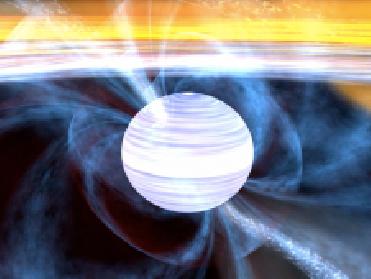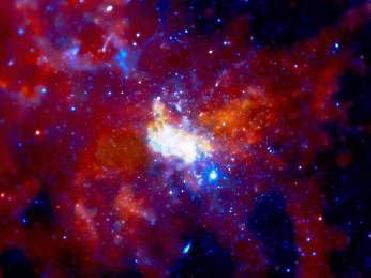
Gas flowing from the star can spin the pulsar up to hundreds of revolutions a second and allow it to resume its lighthouse-like beams of radiation. NASA Photo.
WASHINGTON (BNS): Radio astronomers have uncovered 17 millisecond pulsars in our galaxy by studying unknown high-energy sources detected by NASA's Fermi Gamma-ray Space Telescope.
According to a news release by NASA, the astronomers made the discovery in less than three months. Such discovery will help in using them as a kind of "galactic GPS" to detect gravitational waves passing near Earth.
"Radio astronomers discovered the first millisecond pulsar 28 years ago, said Paul Ray at the Naval Research Laboratory in Washington.
A pulsar is the rapidly spinning and highly magnetized core left behind when a massive star explodes. Millisecond pulsars are nature's most precise clocks, with long-term, sub-microsecond stability that rivals human-made atomic clocks.
"The Global Positioning System uses time-delay measurements among satellite clocks to determine where you are on Earth. Similarly, by monitoring timing changes in a constellation of suitable millisecond pulsars spread all over the sky, we may be able to detect the cumulative background of passing gravitational waves," explained Scott Ransom of the National Radio Astronomy Observatory, as reported in the release.
For a more detailed look at radio wavelengths, the research group studied approximately 100 targets. Therefore, with such an intensive study and a computationally intensive data analysis still under way, the discoveries have started to pour in.
Four of the new objects are "black widow" pulsars, so called because radiation from the recycled pulsar is destroying the companion star that helped spin it up.
"Some of these stars are whittled down to masses equivalent to tens of Jupiters. We've doubled the known number of these systems in the galaxy's disk, and that will help us better understand how they evolve," said Ray, as concluded in the report.
 Previous Article
Previous Article Next Article
Next Article













The Indian Air Force, in its flight trials evaluation report submitted before the Defence Ministry l..
view articleAn insight into the Medium Multi-Role Combat Aircraft competition...
view articleSky enthusiasts can now spot the International Space Station (ISS) commanded by Indian-American astr..
view article